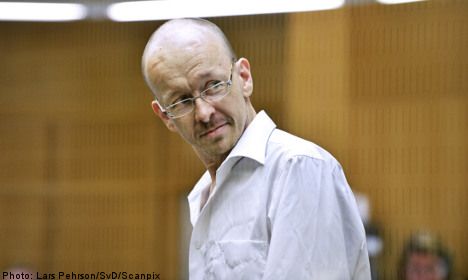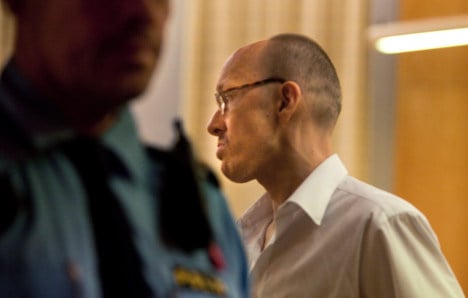Schwartz, a professor in law and philosophy at the Jon Jay College of Criminal Justice in New York was called in as an expert witness, although prosecutors were quick to question her suitability for the case.
After she stated that she had acted as a witness in 20 trials in the US, prosecutor Håkan Larsson asked how many times she had stood as a witness before a jury, to which she answered “only once”.
“My knowledge is theoretic and based on my studies of the subject, I’m not a ballistic technician and I don’t investigate weapons,” she said in court, according to the TT news agency.
Defence lawyer Jesper Montan asked if Schwartz was knowledgeable in the area of bullets and shell casings.
“What we call ballistics is my primary area and where I am knowledgeable, and yes, I am well-read,” she answered, adding that she had also authored academic papers on the subject.
Stefan Pettersson, a criminal expert from the National Laboratory of Forensic Science (Statens kriminaltekniska laboratorium – SKL) had previously testified that several bullets and shells collected at the scenes of Mangs’s suspected shootings could be tied to his confiscated weapon.
Schwartz has pointed to the fact that there is a lot less evidence available than what she is used to having available when making conclusions in such cases.
She also highlighted the differences between Sweden and the US when it comes to the scale by which reviews of evidence are graded.
“In the US, I’ve never seen a number scale like the one in Sweden. Our scale consists of “identifying”, “eliminating” and “lacking conclusion,” she said.
In Sweden however, the process works according to a nine point scale running from -4 to 4, including zero.
Schwartz also pointed out that the United States lacks a single, national crime laboratory similar to SKL, but instead relies on a range of federal and local labs.
She also explained that, unlike Swedish evidence reviews, US reviews include information about every shell casing in the country whereby the weapons manufacturer can be specified according to the signature left in the casing.
“That’s important because since the 1930s we’ve known that a weapon leaves different marks on the shell casing, depending on the manufacturer,” said Schwartz.
According to TT, Mangs sat riveted by the conversation on the edge of his seat as the talk of firearms continued, but soon lost interest and started reading a newspaper.
TT/The Local/og



 Please whitelist us to continue reading.
Please whitelist us to continue reading.
Member comments